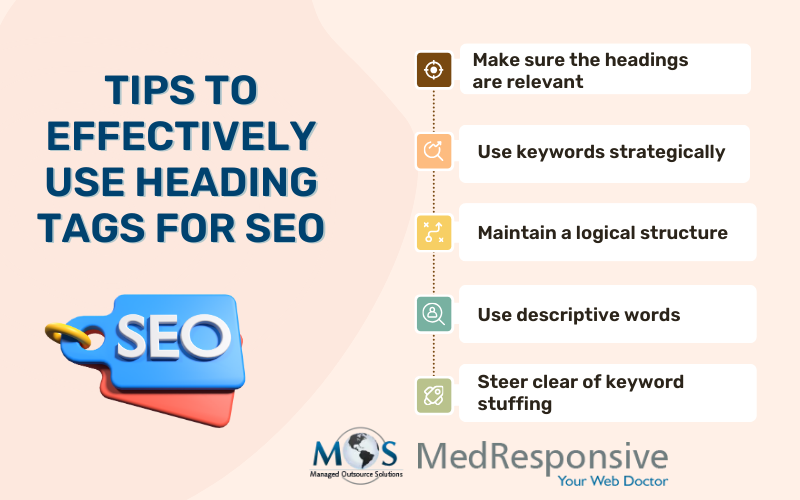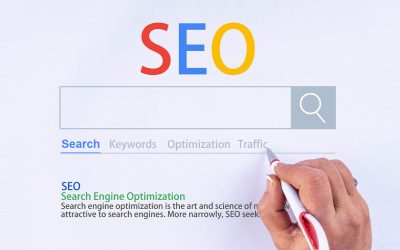In the world of digital marketing, getting your website to rank high on Google search results is crucial to gain visibility and attract traffic. One of the most effective ways to achieve this is by optimizing your website’s content using H1 and H2 tags. These simple yet powerful HTML tags not only make your content more readable and organized, but they also signal to search engines the importance of your content and the keywords it contains. In the context of SEO (Search Engine Optimization), these tags play an important role in helping search engines understand the hierarchy and relevance of the content. Incorporating H1 and H2 tags into your website’s structure can significantly improve its search engine optimization (SEO) and boost your online visibility as well as user experience. This is where professional content writing services come into play, ensuring that your headings are not only keyword-rich but also compelling enough to engage your audience.
Search engines attach greater importance to your header tag copy than the rest of your content. The h1 tag, which contains the topmost heading, is the most important. This is followed in importance by the h2 and h3 tags, which are the second and third subheadings. In these tags are the whole theme of your page indicated. Now you realize how vital it is to get them right.
Why Are Heading Tags Important for SEO?
A heading tag is fundamentally an HTML element that specifies headings on a page. They start with H1 tags, which denote the most crucial title, and go all the way down to H6 tags, which are less important subheadings. However, it goes beyond aesthetics; search engines such as Google closely monitor these tags in order to decipher the hierarchy and structure of your material.
Search engines and consumers alike benefit from heading tags. They provide context for search engines about your page and break up the content to make it easier to read and scan. Consider them as signposts: H1 tags indicate the page’s primary subject, while H2 and H3 tags function as subtopics that provide more details about the material for search engine optimization.
SEO Benefits of H1 and H2 Tags
Using H1 and H2 tags effectively can provide several SEO benefits:
- Improved Readability: Proper use of headings enhances the overall readability of the content, making it easier for users to scan and understand the page.
- Keyword Optimization: Including relevant keywords in the H1 and H2 tags helps search engines understand the main focus of the page and can contribute to better keyword optimization.
- Search Engine Ranking: Properly structured headings can contribute to better search engine rankings by indicating the relevance and organization of the content.
- The H1 Tag
What’s important about the h1 tag is that it is where your content starts. People read that heading first before reading anything else on your page. Therefore, it should certainly appeal to them, by addressing their intent to check out your article. You do expect potential customers to read your article. Your content should address those aspects and your h1 headline should convey to readers that your article is addressing them.
Your h1 tag must accurately describe what your content is about. But, it must be concise. Neil Patel recommends 20 to 70 characters. Making the tag too long not only makes it harder for people to read through, but it also looks clumsy and reduces the tag’s power. It isn’t optimized.
Readers must know what they can expect from the content by checking out your h1 tag. It is similar to what your title tag would be. So, you should include the keyword your content targets in the h1 tag. It should also stand out in the content and be conspicuous. Add the appropriate keyword, but don’t stuff the heading with keywords. That would appear manipulative.
- The H2 Tag
While the h1 tag starts the content, the h2 tag reinforces what the h1 tag describes. The purpose of the h2 tag is to strengthen the concept and theme of your h1 heading and the overall content. It should relate to the h1 and also include the keyword.
Here’s an example:
H1
H2
The h3 tag is a subdivision of the h2 tag and describes an aspect of the main subject of the content. It’s to make the reader aware of the more intricate aspects of the topic. For example, following on from the h1 and h2 examples we mentioned above, the h3 would be this way:
If you’ve figured this out, you can optimize them and ensure your content is easily tracked by the search engines and readers, and makes for easy reading too.
How to Effectively Use H1 Tags
The most significant heading on your page is the H1 element, which should describe the content of the page in detail. Consider it your main title. Since it will be the first thing that users and search engines see, it must be accurate.
Recommended Practices for Optimizing H1 Tags:
- Use Just One H1 Tag Every Page: A single H1 element that appropriately summarizes the material should appear on every page. Search engines can become confused by several H1 tags, which also lessens the impact of your main term.
- Include Your Target Keyword: Your H1 tag should naturally contain the primary keyword you are targeting for that page, even if it is important to avoid stuffing it with keywords. For instance, you may utilize an H1 heading such as “Effective SEO Strategies for Businesses in New York” if your article is about enhancing local SEO in New York.
- Write Briefly and Describe It: The focus of your page should be communicated simply and succinctly with an H1 tag that is usually less than 70 characters.
You can help search engines understand the objective of your website and increase your chances of ranking better for related searches by improving your H1 tags.
How to Effectively Use H2 and H3 Tags
The use of H2 tags in SEO: H2 tags function as subheadings that divide your text into different sections. These are particularly crucial when talking about several ideas or topics on a single page. H2 tags are interpreted by search engines as a sign of connected secondary topics to your main theme. For instance, your H2 may read, “How to Optimize H2 Tags for Better SEO,” and be followed by subsections with advice and tactics in an article about SEO heading tags.
Using H3 Tags for SEO: By providing even more thorough analyses, H3 tags go above and beyond. Consider them as supplementary details that set the information in your H2 tags in context. Although H3 tags aren’t as important for SEO as H1 or H2, they nevertheless help create a structured and unambiguous structure that enhances user experience and aids search engines in comprehending your content.
The Best Ways to Use Heading Tags in SEO
After discussing heading tags and their significance for search engine optimization, let’s review some general best practices for utilizing heading tags wisely on your website:
- Make Sure The Headings Are Relevant: Each heading ought to be pertinent to the next text. Don’t use headings merely to put a keyword in them. Rather, your headers ought to organically present the subjects you’re covering, so that readers can follow along more easily and search engines can comprehend how your material flows.
- Use Keywords Strategically: Without going crazy, you should organically include keywords in your headlines. One of your H2 tags could be something like “SEO Optimization with Headings: Tips for Success,” for instance, if your target keyword is “SEO optimization with headings”.
- Maintain a Logical Structure: An H1 tag should be the first in your SEO-friendly heading structure, followed by H2 tags for your major parts and H3 tags for subtopics. This helps search engines recognize the significance of each portion of your content and makes it easy to explore.
- Use Descriptive Words: The stuff that follows should be explained in detail under each heading. For example, if you are discussing how to use H1 tag optimization to improve SEO, make sure the heading accurately conveys that. Steer clear of ambiguous titles like “More Tips” or “Additional Info.”
- Avoid Keyword Stuffing: Stuffing your headings with keywords is unacceptable. Although it’s crucial to incorporate pertinent keywords, stuffing your headings with too many of them may negatively impact your SEO. A natural, readable organization should always be the goal.
Also Read
Google Clarifies H1-H6 Headings for SEO
By following these best practices, you can ensure that your tags are optimized for both search engines and user experience. With affordable digital marketing services, you can ensure all aspects of your website are optimized, including the content.








